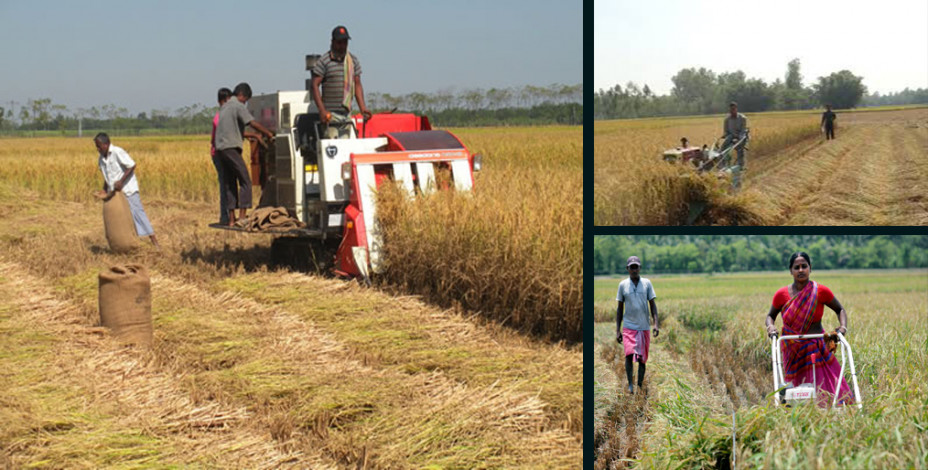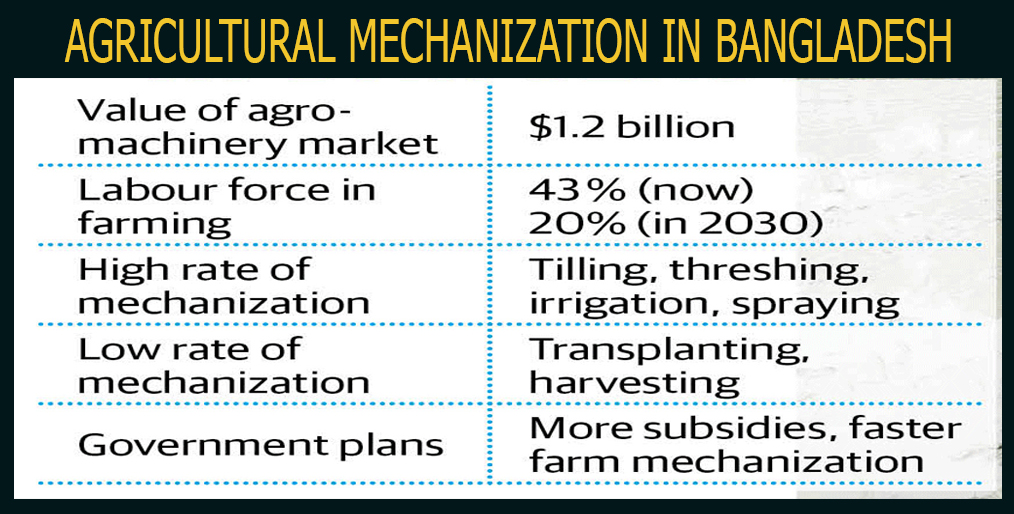
GFMM desk: The government of Bangladesh has decided to go for a big-time farm mechanization program after holding a series of meetings on this over the past two months. The government would provide more subsidies on farm mechanization, and it commissioned a committee on Sunday to come up with a report in a week with recommendations to expedite the process of agricultural mechanization. Bangladesh’s farm sector contributes nearly one-sixth — or 13.31% at constant price — of the total national GDP and employs two-fifth of the total workforce. But there appears a worrying trend of people leaving farm labor profession and pursuing non-farm economic activities. In last Boro season, farmers suffered a double blow of low paddy price and high cost of harvesting. Agriculture Minister Dr. Mohammad Abdur Razzaque, MP, who held two consecutive meetings on farm mechanization in past three weeks with all the stakeholders, said the government would go to any extent in fully mechanizing the country’s farm sector. He said: “If we want to make agriculture profitable, we must use more machinery because the labour price is very high.” He also hinted at providing a subsidy of Tk 3,000 crore to help farmers buy machinery at a cheaper price so that they can minimize labour costs for the production. Officials and experts present at the August 21 and September 15 meetings told this correspondent that unless prompt actions are taken in the direction of mechanization, the country’s rice farmers, in particular, would be in big trouble.

Picture: Collected[/caption] A recent study on “Mechanization for Sustainable Agricultural Intensification in SAARC Region” and the UN FAO predicted that percentage of labor force employed in on-farm agricultural activities would reduce from 43% to 36% by next year and to 20% by 2030 — posing a great challenge to Bangladesh agriculture to produce more grains for increasing population. Meanwhile, with government moving to the direction of farm mechanization, several farm machinery delegations from different countries, including South Korea and France, have recently visited Bangladesh. The committee formed on Sunday will also devise a way to pilot demonstrations of farm implements from these countries so that farmers in different agro-ecological zones consider the efficacy, affordability aspects of imported farm equipment and machines. It is found out that mechanized irrigation is in place in over 60% of rice fields in Bangladesh, somewhat 75% of the harvested crops are threshed by mechanized threshers, and the reaped crops are transported from the fields to the next stops of marketing value chain by mechanized modes of transports. The recently held official meetings emphasized on use of combined harvester, reaper and rice trans-planter as currently their usage are very limited in the country. Sources said the government would not only consider increasing subsidy for farmers to buy machinery, but may also plan to ask banks to finance the matching fund against the subsidy money so that farmers can afford to buy the machines. Agricultural machinery sub-sector in Bangladesh is still considered as a non-formal one and no significant efforts have been made so far to enhance its capacity and linkages to internal and external markets.

Beyond import of tractors, power tillers, diesel engines, spare parts from abroad (mostly from China, India, and South Korea) there are about 70 foundries, 2,000 agricultural machinery and spare parts manufacturing workshops, and about 20,000 repair and maintenance workshops engaged in production and servicing of agricultural machines and spare parts. According to a report presented last year by Bangladesh Agricultural University Prof Monjurul Alam, the agro machinery market reached $1.2 billion in Bangladesh and local manufacturers have a 32% share in it. It said local manufacturers are dominating the spare parts market with more than 60% of the share. The study showed tillage, irrigation, threshing, weeding and pesticide applications have been mechanized by 90%, 63%, 80% and 70%, respectively. Source: Online/SZK
Comment Now